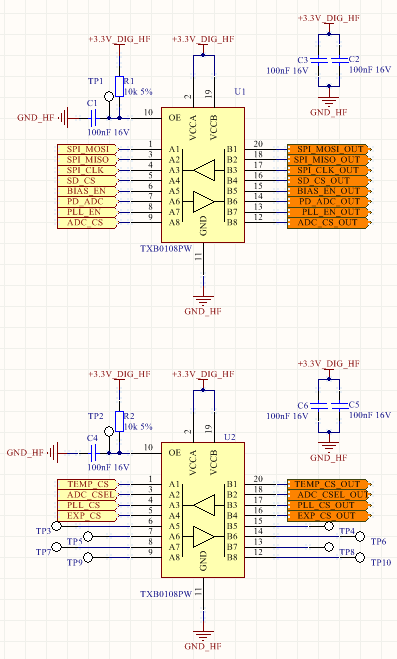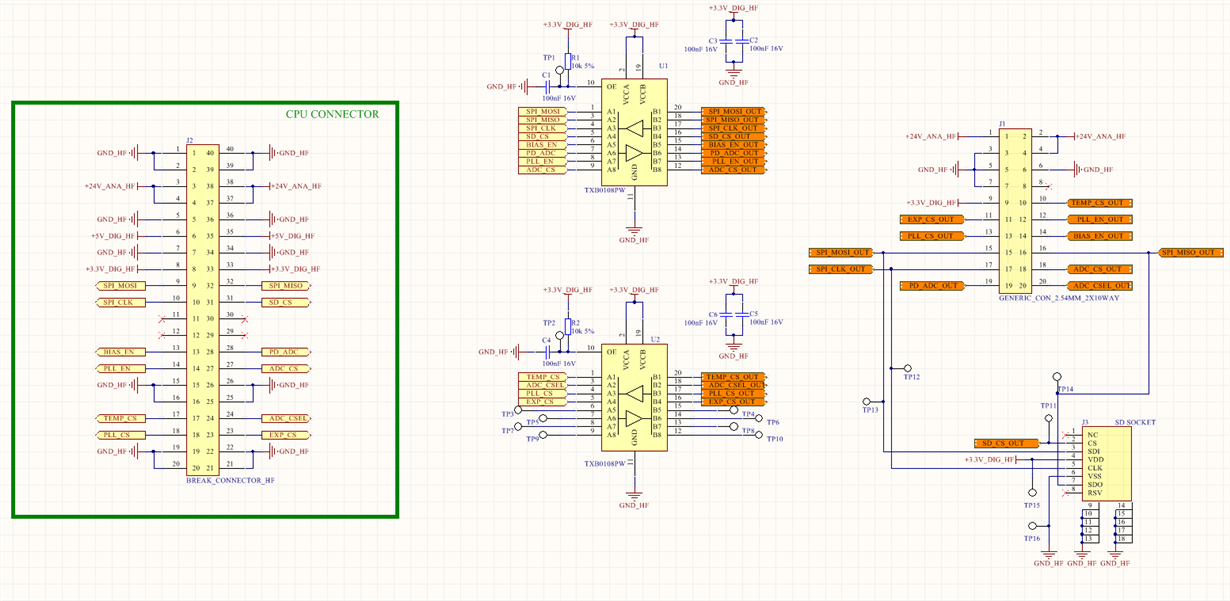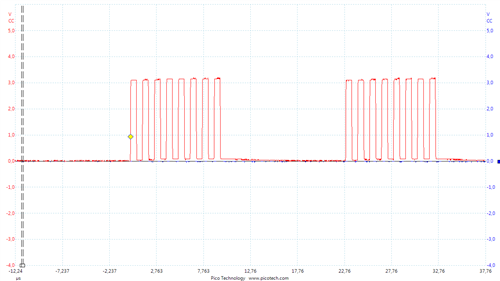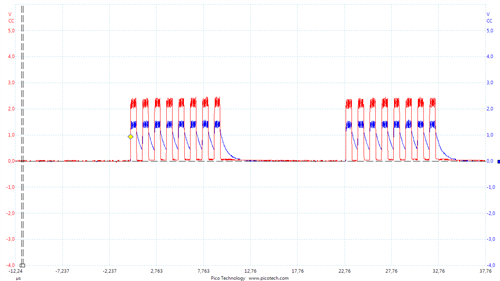Other Parts Discussed in Thread: SN74HC245, SN74HC244, SN74CBT6800A
Hello,
I am currently using a TXB0108 in one of my design. The schematic of the board is the following:
Full board:
The purpose of the TXB0108 is to protect the CPU board (J2) from the board connected on the J1 connector. There is a risk of hot insertion on J1 that will cause a current sink from CPU to daughter board. I have damaged two CPU with this and to avoid this problem I have decided to add a voltage isolator to protect the CPU I/O lines.
So, the TXB0108 will use the same power source for both Vcca and Vccb.
When I watch the SPI CLK signal from the CPU with my scope I got this:
If I measure the same signal after the TXB0108 I got this:
Both signals are now bad. The output of the CPU has a big amplitude loss. The output is 1.5V max.
I use a Picoscope 2204A. The input impedance is 1M/14pF. I think the scope is a part of the problem, maybe I shouldn't use this component for with the same power source?
I have order a TXS0108 to see if the behavior is better.
Is there someone who can help me?
Thanks' a lot.





